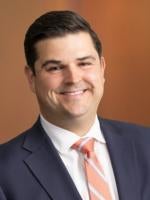U.S. Health and Human Services (HHS) Inspector General Christi Grimm and Assistant Attorney General Kenneth A. Polite, Jr. discussed trends and priorities in healthcare fraud enforcement at the recent American Health Law Association Fraud and Compliance Forum.
The discussion centered on the critical role that technology now plays in healthcare fraud investigation, compliance, and enforcement – and how the vast amount of data generated by the healthcare industry guides agency decisions at all stages of enforcement. Data analysis allows the government to identify instances of fraud and discern trends and outliers that may suggest fraud is occurring within an organization.
The speakers noted that these data-driven investigations are conducted in large part not by attorneys but by information technology specialists and forensic accountants. By working alongside these “technological Sherlocks,” investigators are able to quickly identify the relevant trends so that investigations may proceed in a more timely and efficient manner.
The same holds true for healthcare entities, which can, and should, use technology to identify potential issues earlier and take action to remediate such issues before facing significant exposure to liability. According to Grimm, the most effective protections a private healthcare organization can arm itself with to combat liability include getting a firm handle on its data to assist in developing a robust compliance program and ensuring compliance officers have a voice at the table. A firm understanding of the data allows private healthcare organizations to identify and understand potential gaps, which can help an organization’s compliance program report more accurate, complete, and timely data.
As Polite noted, “Invest in compliance early, invest in compliance often. If there is a corporate leader who fails to do so, they do so at their own risk.”
In addition, Polite indicated that a robust compliance program, starting from the top down, may have a considerable impact on settlement negotiations in the unfortunate instance that a company finds itself in front of the DOJ. An organization is in a better position to receive substantial credit if it can show it had strong data collection and monitoring standards. Further, by having a firm grasp on its data, an organization can identify concerning trends indicative of fraud before the government does. This allows the organization to self-report and take action as soon as possible, putting the organization in a favorable posture before the DOJ and HHS’ Office of Inspector General.
The speakers also emphasized the effectiveness of inter-agency cooperation during the initial stages of investigation. Grimm noted that partnerships with federal, state, and private partners have been critical in achieving the agency’s enforcement goals. Polite noted that the DOJ continues to achieve success in enforcement actions where multi-disciplinary strike forces are involved. By using data analysis techniques in smaller, more localized strike forces, the government can narrow its data analysis to allow for the identification of regional trends that may signal the presence of fraud.
Another major priority for HHS-OIG and DOJ is the desire to hold individuals accountable, as evidenced by the guidelines Deputy Attorney General Lisa Monaco shared earlier this month. Polite explained that while fraudulent schemes may have been previously localized and conducted through a single entity, they now involve numerous entities and span multiple states or countries. The goal, then, is to follow these chains of bad actors and assign appropriate responsibility and proportional punishment to all involved.






 />i
/>i
